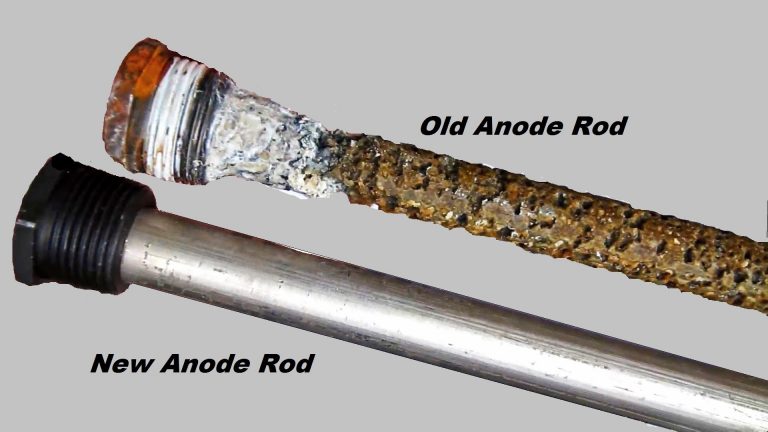Every team has a “go-to” guy – that one special person you always can count on in clutch situations.
Well, in the case of your water heater, that “guy” is the anode rod. The anode rod – also known as the sacrificial rod for reasons that will soon become apparent – is a leading factor in determining how many years of productive use you can expect from your water heater.

Anodes rods are steel wires wrapped by one of three metals: aluminum, magnesium, or zinc. While each metal has its own special application – aluminum works best with hard water – they share the same purpose, and that’s protecting the inside walls of the storage tank from rust and corrosion.
Look at your water heater storage tank, and you’ll notice the anode rod protruding from the top. It’s designed to be accessible for ease of replacement roughly every four years. When you look at the “before” and “after” photos below, you’ll see why.
Through the process of electrolysis, the anode (or sacrificial) rod attracts corrosive elements inside your water supply to itself, thus sparing the inside walls of your storage tank from damage.
Let’s say, however, that over time, you forget all about inspecting the rod, which you should do every six months or so. For one thing, you might notice a reddish or brown tint to your hot water, a clear indication of rust. What’s more, a badly corroded rode can break off with the lower portion settling at the bottom of the tank. There it will bang around which can cause your tank to crack. Or the rod can become so badly corroded that it simply can no longer absorb any more corrosive elements.
To keep your entire water heater system in top working order, we recommend annual inspections. That also helps ensure your ongoing comfort while helping to protect your home from a gas leak should you have a natural gas unit. For water heater maintenance or repair, contact Mike’s Plumbing & Heating today. We’re your local plumbing and heating team of experts.
